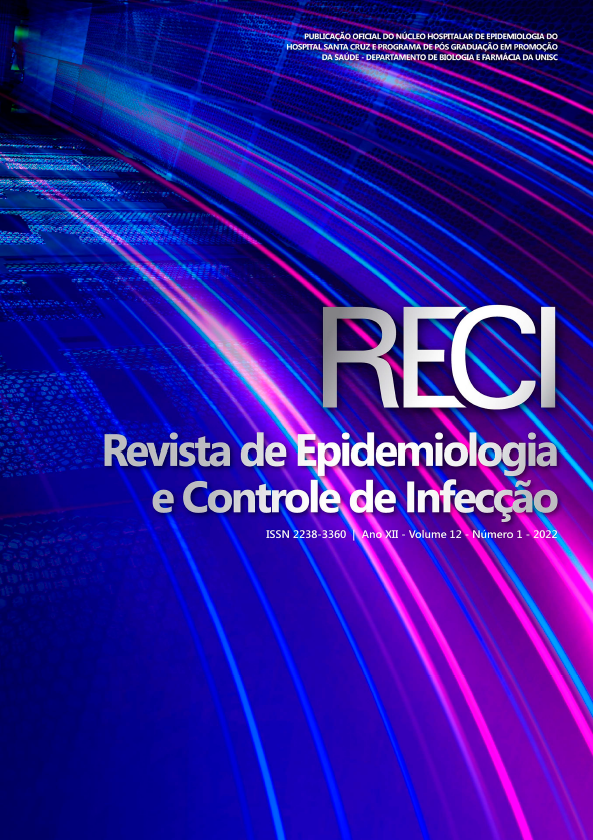Rhodotorula fungemia in a patient with acute lymphoblastic leukemia
DOI:
https://doi.org/10.17058/reci.v12i1.16325Keywords:
Rhodotorula, Amphotericin, Acute Lymphoblastic LeukemiaAbstract
Objectives: Rhodotorula is an environmental yeast that belongs to Basidiomycota Phylum. Rhodotorula species are ubiquitous in nature, can be found in soil and freshwater. Immunocompromised patients can develop Rhodotorulosis due to wide-ranging exposure to Rhodotorula in the hospital environment. Case Discussion: The patient was a 3-year-old male with a diagnosis of Pro B-Acute Lymphoblastic Leukemia (ALL). He was admitted to the hospital with complaints of malaise, fatigue, weight loss, and diarrhea between courses of chemotherapy. Rhodotorula was isolated from the patient’s blood culture obtained during the elevation of temperature. After 14 days of amphotericin B treatment, clinical situation of the patient was improved and he was discharged. Conclusion: Rhodotorula spp. as a rare yet emerging pathogen, often presents as fever of unknown etiology resistant to antibacterial treatment and can be associated with fungemia and other severe complications.
Downloads
References
Tournas VH, Katsoudas E, Miracco EJ. Moulds, yeasts and aerobic plate counts in ginseng supplements. Int J Food Microbiol. 2006; 108:178–81. https://doi.org/10.1016/j.ijfoodmicro.2005.11.009
Hagan ME, Klotz SA, Bartholomew W, et al. A pseudoepidemic of Rhodotorula rubra: a marker for microbial contamination of the bronchoscope. Infect Control Hosp Epidemiol. 1995; vol. 16[12]:727– 728. https://doi.org/10.1086/647048
Potenza L, Chitasombat MN, Klimko N, et al. Rhodotorula infection in haematological patient: Risk factors and outcome. Mycoses. 2019 Mar;62(3):223-229. https://doi.org/10.1111/myc.12875
Miceli MH, Díaz JA, Lee SA. Emerging opportunistic yeast infections. Lancet Infect Dis. 2011; 11[2]:142–51. https://doi.org/10.1016/S1473-3099(10)70218-8
Lunardi LW, Aquino VR, Zimerman RA, et al. Epidemiology and outcome of Rhodotorula fungemia in a tertiary care hospital. Clin Infect Dis. 2006; 43[6]:e60-3. https://doi.org/10.1086/507036
Tuon FF, Costa SF. Rhodotorula infection. A systematic review of 128 cases from literature. Rev Iberoam Micol. 2008; 25(3):135-40. https://doi.org/10.1016/s1130-1406(08)70032-9
Ioannou P, Vamvoukaki R, Samonis G. Rhodotorula species infections in humans: A systematic review. Mycoses. 2019 Feb;62(2):90-100. http://dx.doi.org/10.1111/myc.12856
Strati F, Di Paola M, Stefanini I, et al. Age and Gender Affect the Composition of Fungal Population of the Human Gastrointestinal Tract. Front Microbiol. 2016; 7:1227. https://doi.org/10.3389/fmicb.2016.01227
Wirth F, Goldani LZ. Epidemiology of Rhodotorula: an emerging pathogen. Interdiscip Perspect Infect Dis. 2012; 2012:465717. https://doi.org/10.1155/2012/465717
Gharaghani M, Taghipour S, Zarei Mahmoudabadi A. Molecular identification, biofilm formation and antifungal susceptibility of Rhodotorula spp. Mol Biol Rep. 2020 Nov;47(11):8903-8909. doi: 10.1007/s11033-020-05942-1. https://doi.org/10.1007/s11033-020-05942-1
Downloads
Published
How to Cite
Issue
Section
License
Copyright (c) 2022 Mehmet Erinmez

This work is licensed under a Creative Commons Attribution 4.0 International License.
The author must state that the paper is original (has not been published previously), not infringing any copyright or other ownership right involving third parties. Once the paper is submitted, the Journal reserves the right to make normative changes, such as spelling and grammar, in order to maintain the language standard, but respecting the author’s style. The published papers become ownership of RECI, considering that all the opinions expressed by the authors are their responsibility. Because we are an open access journal, we allow free use of articles in educational and scientific applications provided the source is cited under the Creative Commons CC-BY license.


